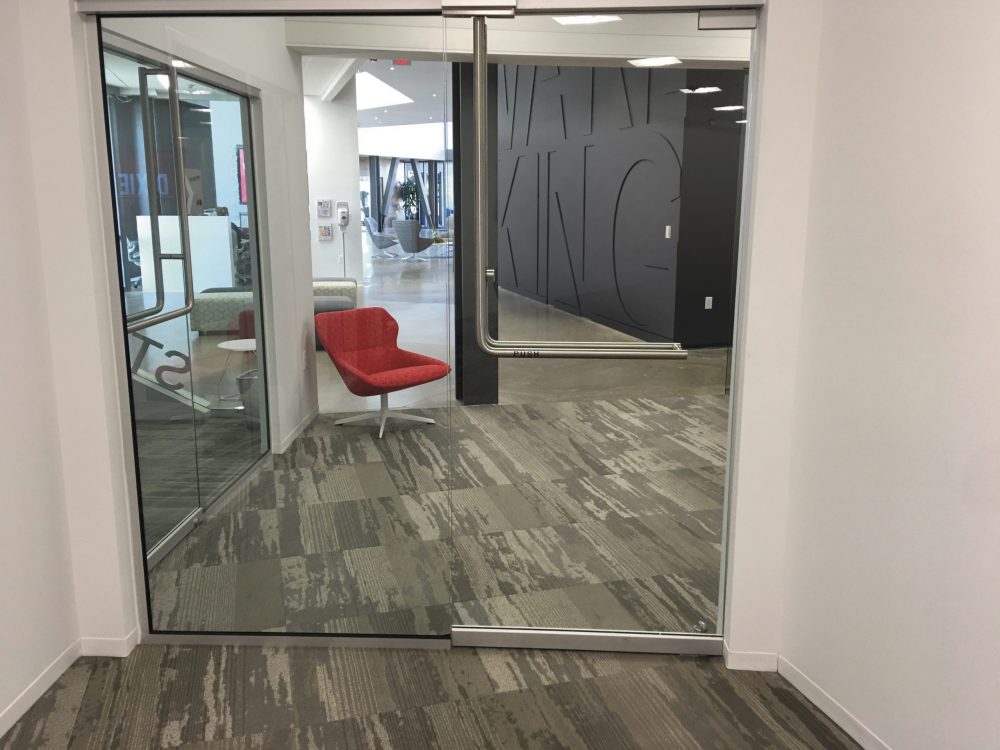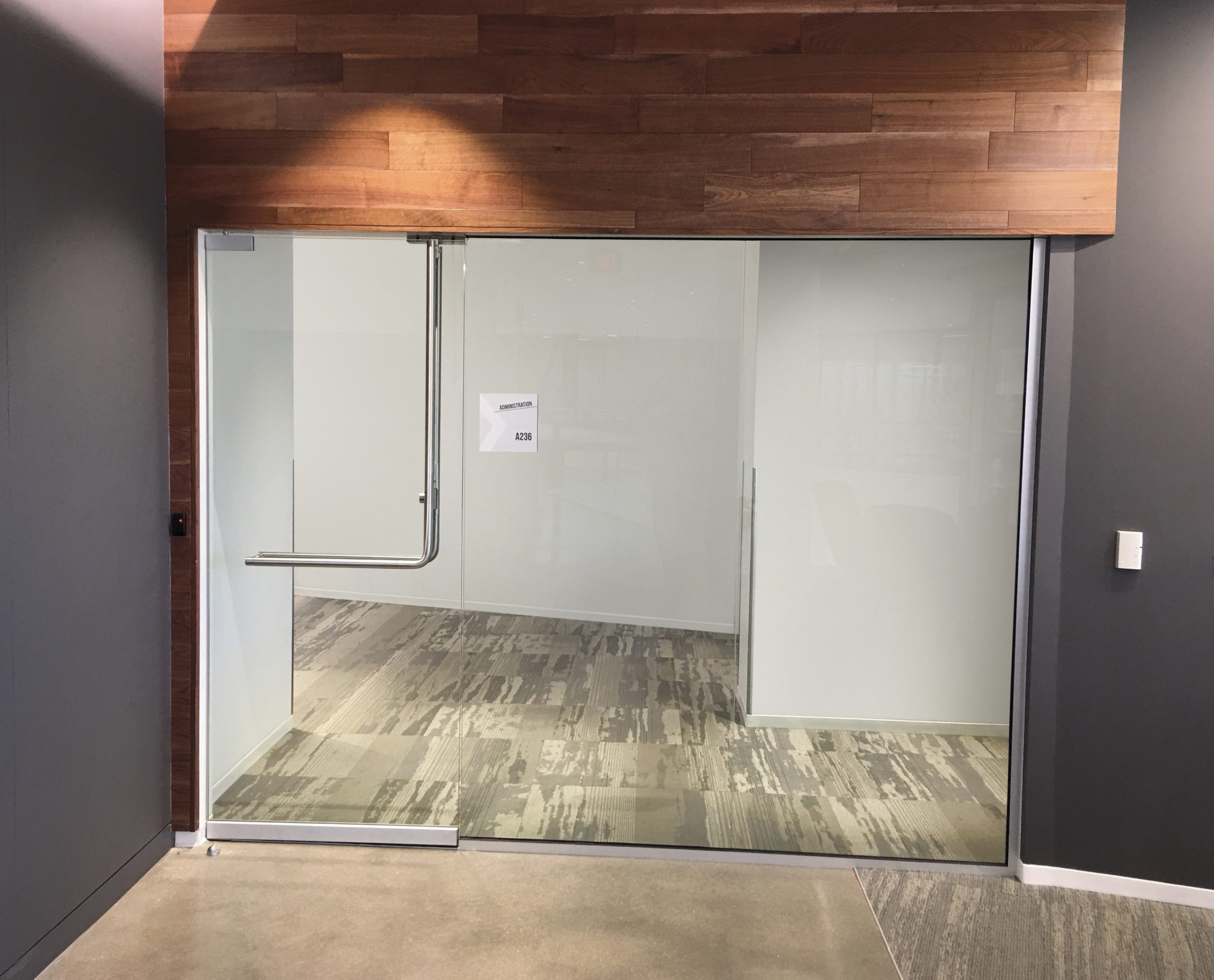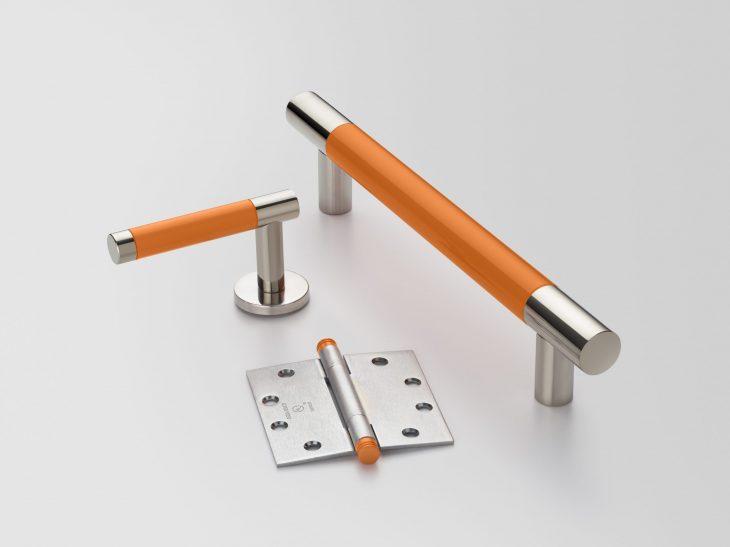Beyond design and aesthetic, glass can be customized and enhanced for security and natural light to increase safety, productivity, communication and improve the overall workplace experience.

Natural light in the workplace is a growing trend, and the use of glass is becoming the go-to solution. But glass can offer more beyond just aesthetics and design. The full ecosystem of glass solutions offers functionality, from the glass itself to the hardware that accompanies it. It enhances the utility of the space you’re working in, allowing for more open communication and line of sight. The use of glass has many benefits in the workplace, from the layout and functionality of the space, to the energy and mood it provides its occupants.
Designing for Wellness
In the workplace, daylighting, the use of natural light to reduce traditional electrical lighting, continues to be increasingly common. Not only does it reduce energy consumption and offer a sustainable option that many consumers are seeking, its impact on personal health can be even greater. Studies show that natural light is proven to boost productivity, improve mood and enhance overall well-being, making it high on the list for increased employee experience and performance. In a recent survey conducted by the HR advisory firm Future Workplace, it found that natural light and views of the outdoors outranked other perks, like onsite cafeterias and fitness centers, as the number one attribute to a workplace environment. While the demand for wellness-based designs continue to grow, workplace design trends are shifting away from being private and enclosed to collaborative and open. Glass makes both – wellness and collaboration – possible.
The office environment often reflects a business’s core values and culture. Companies look to strive for collaboration and transparency, which is why we’re seeing so many new open office layouts. Implementing glass solutions increases employee well-being while also maintaining a collaborative feel, which can result in a positive and healthy work environment that can enhance efficiency, communication and collaboration.
Advancing Sustainable Environments
At the end of 2017, one out of every four dollars under professional management in the United States—$12.0 trillion or more—was invested according to sustainable investing strategies. In fact, estimates show that commercial building owners and managers will invest a projected $960 billion globally to make their existing infrastructure more sustainable between 2015 and 2023 to meet the demand for green buildings. As more facility managers, architects and designers seek to go green and promote a lower carbon footprint, glass is becoming a central tenant.
Electrochromic glass, or “smart glass,” uses electricity to change it from opaque to translucent and can be controlled manually or programmed to adjust according to the position of the sun. Aside from the obvious reduction in energy costs from limiting the use of electrical lighting, automatic shading and design in glass curtain walls help reduce the load on a building’s HVAC unit, further reducing energy use and costs.

Using Glass for Human-Centric Design
From onsite gyms, meditation rooms and more, employers are investing in the health and wellness of their workforce. This includes using the design of the space as a way to improve the human experience. WELL certifications, measuring how buildings promote healthy lifestyles and employee wellness, have become the larger goal for designers.
Through glass, architects and business owners can create a dynamic and human-centric environment that feels authentic to the brand and leaves growth for new innovations.
Historically, glass has had limitations in terms of flexibility in installation – limiting its utility and utilization. With the growth of architectural interest for open office design through high ceilings and tall glass doors, breakthroughs in technology and manufacturing have made it feasible to work with the consistency and weight of glass to fit those larger openings and the relevant dimensions that spaces demand.
The increase in compatible products is enabling even more glass incorporations into new building designs and renovations. This includes panic devices to enable greater safety without disrupting the aesthetic appeal of a glass door, to pivots and door closures that are durable for heavy glass to reduce sound transmissions.
Incorporating glass invites light and fluidity into spaces, while also establishing separate rooms without sacrificing the collaborative feeling needed for today’s workforce. With glass, flexibility is inherent. As workplaces continue to evolve across industries, companies can easily reconfigure their space without having to completely renovate in order to accommodate for new office innovations.

Using Glass for Functional Design
With the use of glass environments increasing, custom design options provide the opportunity to modify functional applications, instead of the traditional, one-size-fits-all approach. This gives buildings and shared spaces the function they need without sacrificing the aesthetic.
Designers can employ shaded or frosted glass as a clean and sophisticated way to create private spaces without closing off an area entirely. For example, conference rooms or individual offices can use these features to increase privacy for potential confidential conversations, while keeping the natural and open feel of the overall space.
Additionally, incorporating color into glass or door hardware is a subtle but especially useful tool for tough to navigate spaces, like schools, hospitals and other commercial buildings, where people visit often but may be unfamiliar with the layout of the building. Using different colored glass doors, hardware and partitions can offer savvier wayfinding navigation through a space, leaving out the not-so-aesthetically pleasing signage or floor maps we’re used to seeing in hospitals or parking garages.
Glass solutions can even reinforce a company’s brand or a school’s colors throughout small spaces or large campuses. Beyond customizing the color of the glass itself, hardware options can also offer a unique solution. From door rails and pulls, to panic devices and new finishes, like matte black, building owners can strengthen brand identity by aligning with the colors in their brand guidelines.
Glass plays a functional role with security as well. In older building designs, glass was used as a security feature, allowing visitors to be seen through doors and walls. Today, electronic access control (EAC) solutions incorporate security software and seamlessly integrate into glass openings for enhanced protection, beyond line of sight.
When it comes to design and functionality, the extent of decorative options and customizations should not be overlooked when thinking through the workplace layout. The desire for bright, open spaces will continue to rise. Through innovations in the glass industry, architects and builders are able to make their design aspirations come true. And beyond design and aesthetic, glass can be customized and enhanced for security and natural light to increase safety, productivity, communication and improve the overall workplace experience.


Its a great workplace design! Thanks for sharing